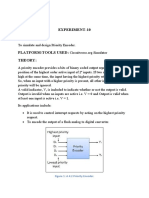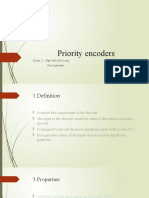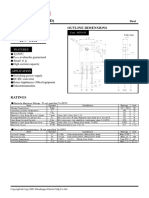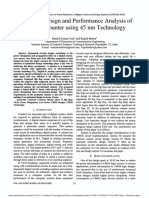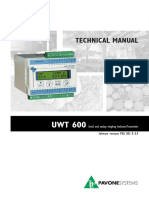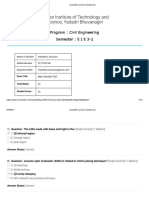0% found this document useful (0 votes)
24 views11 pagesDLD Assignment2 Spring 2025
The document provides an overview of digital logic devices, focusing on Multiplexers, Demultiplexers, Encoders, Priority Encoders, and Decoders. Each device is explained with definitions, truth tables, and circuit diagrams, detailing their functions and applications in combinational circuits. Additionally, it includes an assignment section with tasks related to logic circuits and practical applications in systems like aircraft monitoring.
Uploaded by
irtiza.cu.cuCopyright
© © All Rights Reserved
We take content rights seriously. If you suspect this is your content, claim it here.
Available Formats
Download as PDF, TXT or read online on Scribd
0% found this document useful (0 votes)
24 views11 pagesDLD Assignment2 Spring 2025
The document provides an overview of digital logic devices, focusing on Multiplexers, Demultiplexers, Encoders, Priority Encoders, and Decoders. Each device is explained with definitions, truth tables, and circuit diagrams, detailing their functions and applications in combinational circuits. Additionally, it includes an assignment section with tasks related to logic circuits and practical applications in systems like aircraft monitoring.
Uploaded by
irtiza.cu.cuCopyright
© © All Rights Reserved
We take content rights seriously. If you suspect this is your content, claim it here.
Available Formats
Download as PDF, TXT or read online on Scribd
/ 11


